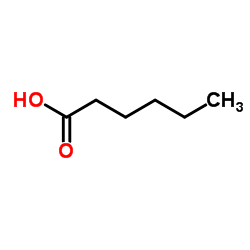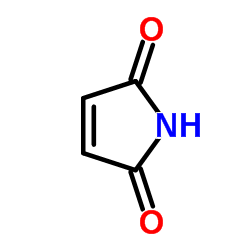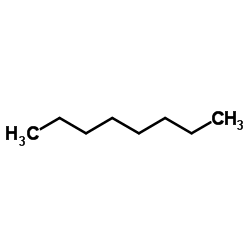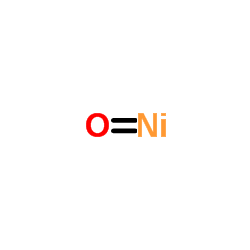373-02-4
| 中文名 | 醋酸镍 |
|---|---|
| 英文名 | Nickelous acetate |
| 中文别名 |
乙酸镍(II)盐
乙酸镍 |
| 英文别名 |
anhydrous nickel acetate
Acetic acid, nickel salt (1:1) nickelous diacetate Nickel diacetate Nickel - acetic acid (1:1) EINECS 206-761-7 |
| 密度 | 9.50 lb/gal |
|---|---|
| 沸点 | 117.1ºC at 760 mmHg |
| 熔点 | 1555°C |
| 分子式 | C2H4NiO2 |
| 分子量 | 118.745 |
| 闪点 | 40ºC |
| 精确质量 | 117.956474 |
| PSA | 37.30000 |
| LogP | 0.09090 |
| 外观性状 | 绿色结晶粉末 |
| 稳定性 | 浅绿色柱状结晶,具吸湿性。加热至熔点分解,溶于水,在100g水中溶解度为16.6g。不溶于乙醇。有毒,应密闭保存。 |
| 计算化学 | 1.疏水参数计算参考值(XlogP):无 2.氢键供体数量:0 3.氢键受体数量:4 4.可旋转化学键数量:0 5.互变异构体数量:无 6.拓扑分子极性表面积80.3 7.重原子数量:9 8.表面电荷:0 9.复杂度:25.5 10.同位素原子数量:0 11.确定原子立构中心数量:0 12.不确定原子立构中心数量:0 13.确定化学键立构中心数量:0 14.不确定化学键立构中心数量:0 15.共价键单元数量:3 |
Synonym:Acetic acid, Nickel (II) salt; Nickelous acetat Section 2 - COMPOSITION, INFORMATION ON INGREDIENTS
Risk Phrases: 20/22 Section 3 - HAZARDS IDENTIFICATION EMERGENCY OVERVIEW
Harmful by inhalation and if swallowed.Carcinogen. Potential Health Effects Eye: May cause eye irritation. Skin: May cause skin irritation. Ingestion: Harmful if swallowed. May cause gastrointestinal irritation with nausea, vomiting and diarrhea. Inhalation: May cause respiratory tract irritation. Chronic: May cause cancer according to animal studies. May cause reproductive and fetal effects. Section 4 - FIRST AID MEASURES Eyes: Immediately flush eyes with plenty of water for at least 15 minutes, occasionally lifting the upper and lower lids. Get medical aid immediately. Skin: Immediately flush skin with plenty of soap and water for at least 15 minutes while removing contaminated clothing and shoes. Get medical aid if irritation develops or persists. Ingestion: If victim is conscious and alert, give 2-4 cupfuls of milk or water. Get medical aid immediately. Inhalation: Get medical aid immediately. Remove from exposure to fresh air immediately. If not breathing, give artificial respiration. If breathing is difficult, give oxygen. Notes to Physician: Treat symptomatically and supportively. Section 5 - FIRE FIGHTING MEASURES General Information: As in any fire, wear a self-contained breathing apparatus in pressure-demand, MSHA/NIOSH (approved or equivalent), and full protective gear. During a fire, irritating and highly toxic gases may be generated by thermal decomposition or combustion. Extinguishing Media: Use extinguishing media most appropriate for the surrounding fire. Autoignition Temperature: Not available. Flash Point: Not available. NFPA Rating: Not published. Explosion Limits, Lower: Not available. Upper: Not available. Section 6 - ACCIDENTAL RELEASE MEASURES General Information: Use proper personal protective equipment as indicated in Section 8. Spills/Leaks: Wash area with soap and water. Clean up spills immediately, observing precautions in the Protective Equipment section. Sweep up, then place into a suitable container for disposal. Avoid generating dusty conditions. Provide ventilation. Section 7 - HANDLING and STORAGE Handling: Wash thoroughly after handling. Avoid contact with eyes, skin, and clothing. Avoid ingestion and inhalation. Use with adequate ventilation. Storage: Store in a cool, dry place. Section 8 - EXPOSURE CONTROLS, PERSONAL PROTECTION Engineering Controls: Use adequate general or local exhaust ventilation to keep airborne concentrations below the permissible exposure limits. Personal Protective Equipment Eyes: Wear appropriate protective eyeglasses or chemical safety goggles as described by OSHA's eye and face protection regulations in 29 CFR 1910.133. Skin: Wear appropriate gloves to prevent skin exposure. Clothing: Wear appropriate protective clothing to prevent skin exposure. Respirators: Follow the OSHA respirator regulations found in 29CFR 1910.134. Always use a NIOSH-approved respirator when necessary. Section 9 - PHYSICAL AND CHEMICAL PROPERTIES Physical State: Solid Appearance: green Odor: None reported pH: Not available. Vapor Pressure: Not available. Vapor Density: Not available. Evaporation Rate: Not available. Viscosity: Not available. Boiling Point: Not available. Freezing/Melting Point: Not available. Decomposition Temperature: Not available. Solubility: Soluble in water. Specific Gravity/Density: 1.798 Molecular Formula: C4H6O4Ni Molecular Weight: 176.7296 Section 10 - STABILITY AND REACTIVITY Chemical Stability: Stable under normal temperatures and pressures. Conditions to Avoid: None reported. Incompatibilities with Other Materials: None reported. Hazardous Decomposition Products: Irritating and toxic fumes and gases. Hazardous Polymerization: Has not been reported. Section 11 - TOXICOLOGICAL INFORMATION RTECS#: CAS# 373-02-4: QR6125000 LD50/LC50: CAS# 373-02-4: Oral, mouse: LD50 = 410 mg/kg; Oral, rat: LD50 = 350 mg/kg. Carcinogenicity: Nickel(ii) acetate - NTP: Suspect carcinogen OSHA: Possible Select carcinogen See actual entry in RTECS for complete information. Section 12 - ECOLOGICAL INFORMATION For further information, contact Fisher Scientific. Section 13 - DISPOSAL CONSIDERATIONS Dispose of in a manner consistent with federal, state, and local regulations. Section 14 - TRANSPORT INFORMATION CDG/CPL IMO No information available. IATA No information available. RID/ADR No information available. Canadian TDG No information available. Section 15 - REGULATORY INFORMATION European/International Regulations European Labeling in Accordance with EC Directives Hazard Symbols: XN Risk Phrases: R 20/22 Harmful by inhalation and if swallowed. Safety Phrases: S 24/25 Avoid contact with skin and eyes. WGK (Water Danger/Protection) CAS# 373-02-4: Canada CAS# 373-02-4 is listed on Canada's DSL/NDSL List. WHMIS: Not available. CAS# 373-02-4 is listed on Canada's Ingredient Disclosure List. Exposure Limits US FEDERAL TSCA CAS# 373-02-4 is listed on the TSCA inventory. SECTION 16 - ADDITIONAL INFORMATION N/A |
CHEMICAL IDENTIFICATION
HEALTH HAZARD DATAACUTE TOXICITY DATA
MUTATION DATA
|
| 海关编码 | 2915299090 |
|---|
|
~% 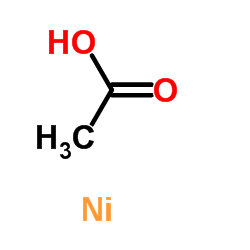
373-02-4 |
| 文献:Markgraf, H. Diss. Leipzig 1923, S. 11 |
|
~0% 
373-02-4 |
| 文献:Yamamoto, Takakazu; Ishizu, Junichi; Yamamoto, Akio Journal of the American Chemical Society, 1981 , vol. 103, # 23 p. 6863 - 6869 |
|
~% 
373-02-4 |
| 文献:Gmelin Handbook: Ni: MVol.B3, 41, page 859 - 861 |
|
~41%
详细
|
| 文献:Yamamoto, Takakazu; Ishizu, Junichi; Yamamoto, Akio Journal of the American Chemical Society, 1981 , vol. 103, # 23 p. 6863 - 6869 |
|
~% 
373-02-4 |
| 文献:Gmelin Handbook: Ni: MVol.B3, 41, page 859 - 861 |
|
~% 
373-02-4 |
| 文献:Gmelin Handbook: Ni: MVol.AII2, 13, page 934 - 996 |
|
~% 
373-02-4 |
| 文献:Guseva; Antina; Berezin Russian Journal of Coordination Chemistry/Koordinatsionnaya Khimiya, 2003 , vol. 29, # 10 p. 690 - 693 |
|
~% 
373-02-4 |
| 文献:Spaeth Monatshefte fuer Chemie, vol. 33, p. 246 |
| 上游产品 8 | |
|---|---|
| 下游产品 10 | |
| 海关编码 | 2915299090 |
|---|---|
| 中文概述 | HS: 2915299090 其他乙酸盐 退税率:9.0% 监管条件:AB(入境货物通关单,出境货物通关单) 增值税率:17.0% 最惠国关税:5.5% 普通关税:50.0% |
| 申报要素 | 品名, 成分含量, 用途 |
| 监管条件 | A.入境货物通关单 B.出境货物通关单 |
| 检验检疫 | R.进口食品卫生监督检验 S.出口食品卫生监督检验 M.进口商品检验 N.出口商品检验 |
| Summary | 2915299090 salts of acetic acid。supervision conditions:AB(certificate of inspection for goods inward,certificate of inspection for goods outward)。VAT:17.0%。tax rebate rate:9.0%。MFN tariff:5.5%。general tariff:50.0% |



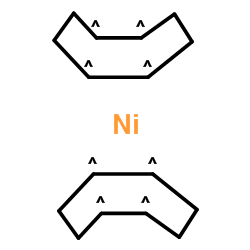





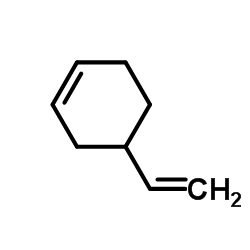
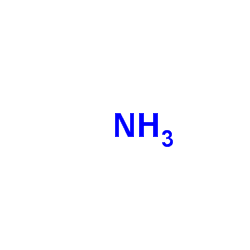



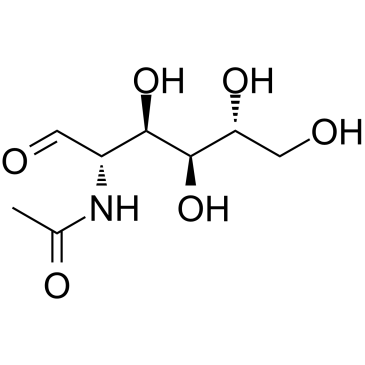

![Nickel,bis[2-[(phenylimino-kN)methyl]phenolato-kO]- (9CI)结构式](https://image.chemsrc.com/caspic/224/14266-60-5.png)


